
On the morning of November 9th, I stood barefoot in my kitchen staring unbelievingly at my iPhone. Trump Triumphs, The New York Times headline read. Outsider Mogul Captures the Presidency, Stunning Clinton in Battleground States.
The night before, I had gone to bed around midnight trying to convince myself it couldn’t happen: Donald Trump couldn’t possibly win the White House. Every article I had read, every poll I had seen, and every friend or colleague I had spoken to told me it was out of the question. I knew, as a writer living in New York City, I was living in a bubble — but still, I just couldn’t fathom that enough people would vote for Trump to make him president.
I read the words again: Trump Triumphs.
What the fuck happened?
I repeated the question over and over in my head as I got ready for work. By the time I got out of the shower, my disbelief and confusion had turned to anger bordering on sheer rage.
Fuck The New York Times, I thought. They lied to me.
For months, the polls on their website had assured me that Clinton had a considerable lead over Trump. How could they have gotten it so dead wrong?
I’ve been a loyal subscriber to The New York Times for years, first to the print edition and now to the digital version. Every month, I fork over $15 for what I perceive to be credible news provided by the best journalists in the business.
When The New York Times put up a paywall several years ago, I was annoyed but at the same time, it made sense to me. We should pay for credible news, I thought. Journalists put themselves on the front lines every day, often sacrificing their family and personal lives, to bring news to the people. We should pay for the information they provide.
Turns out, when it comes to being a devoted news reader, I’m not the only one who stays loyal to one or two sources. According to a 2016 survey conducted by Pew Research Center, 76 percent of Americans say they usually turn to the same sources for news.
A separate survey conducted by Pew in 2014 found that consistent conservatives overwhelmingly choose Fox News as their main source of news (47 percent), while consistent liberals rely on a greater range of news sources such as CNN (15 percent), NPR (13 percent), MSNBC (12 percent), and The New York Times (10 percent).
These news divides along party lines are no surprise. However, the same survey found that, overall, the most trusted source of news (for both political parties) was The Economist, followed by BBC, NPR, PBS, The Wall Street Journal, ABC News, CBS News, NBC News, and CNN (the list goes on — check it out here).
Post-election, a December 2016 survey conducted by online polling firm Morning Consult found that Americans believe ABC, CBS, NBC, The Wall Street Journal, and The New York Times are the most credible news sources (Huffington Post, Breitbart, The Onion, and InfoWars were named the least credible).
In an effort to cement its place as the top source for credible news, The New York Times recently launched this ad campaign around “The Truth,” its first major TV marketing effort in more than a decade.
I’ve kept my subscription — but I’m no longer relying on The New York Times as my main news source. Ever since the election, I’ve been cross-checking the stories I read with at least two or three other sources — and I’ve been amazed by the differences in coverage.
Take, for example, Monday’s news about the CBO’s report on the American Health Care Act, the Republican plan to replace the Affordable Care Act.
Here’s how several different news outlets covered the story:
The New York Times
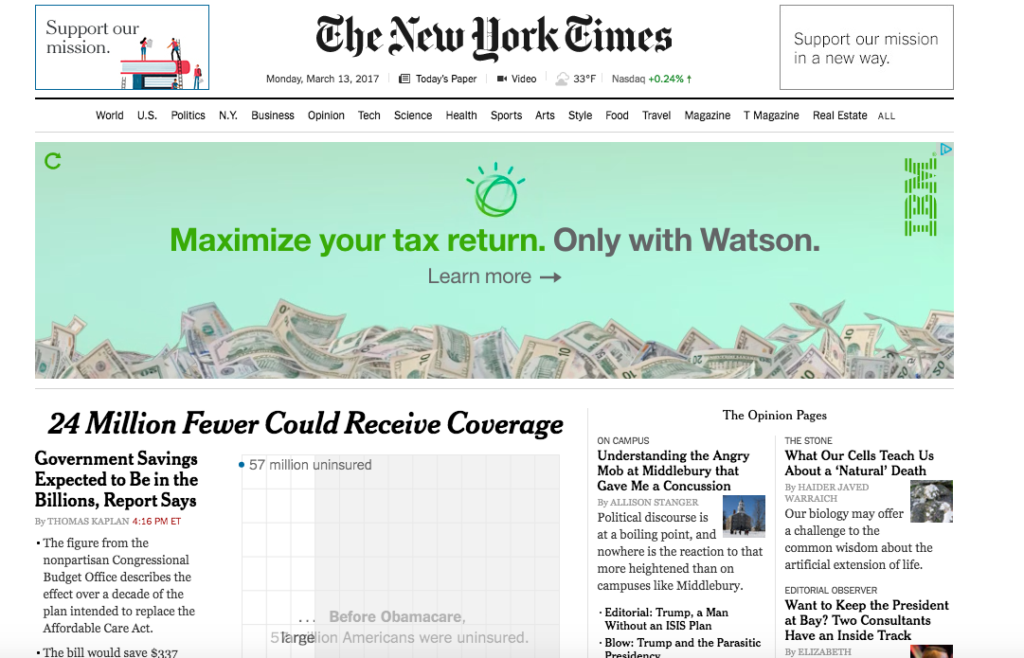
Fox News
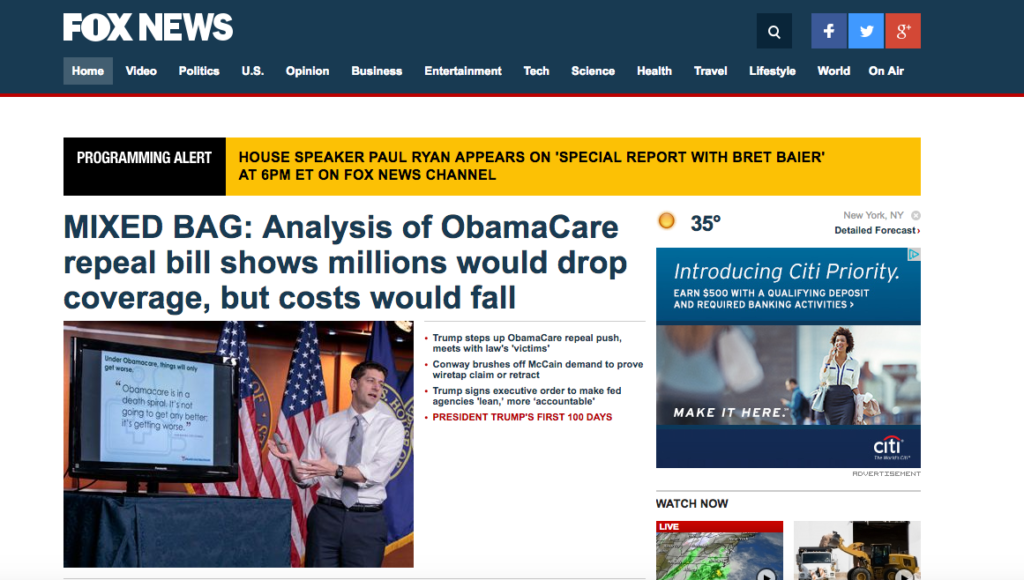
The Wall Street Journal
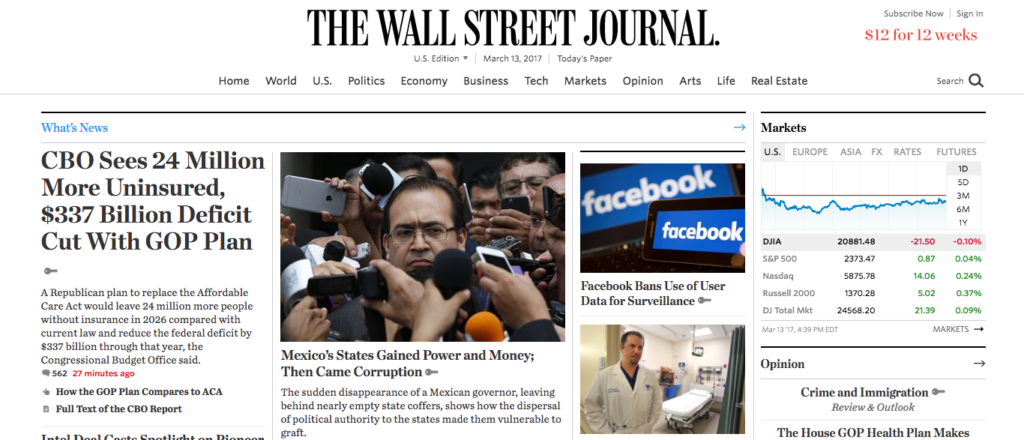
CBS News
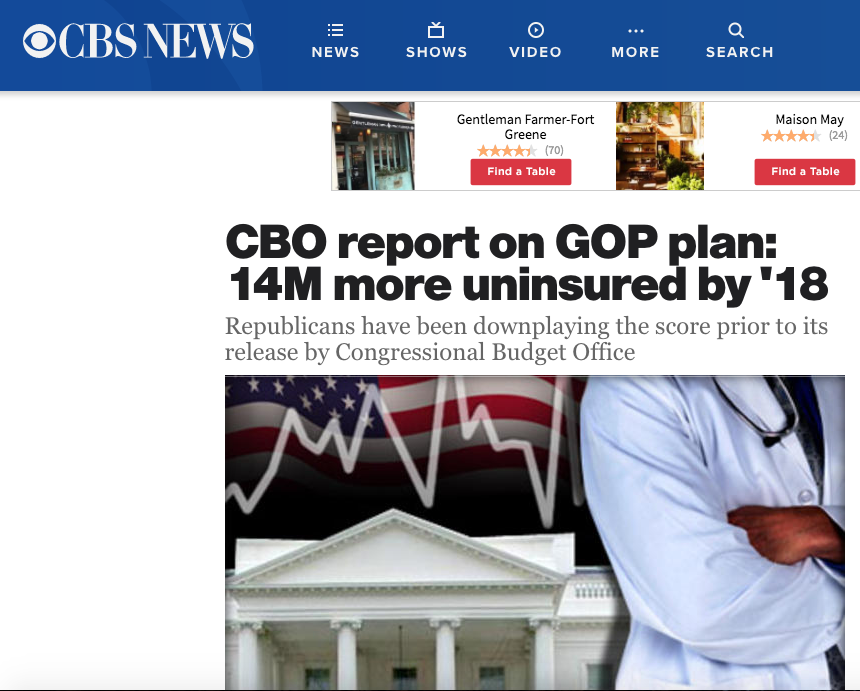
NBC News
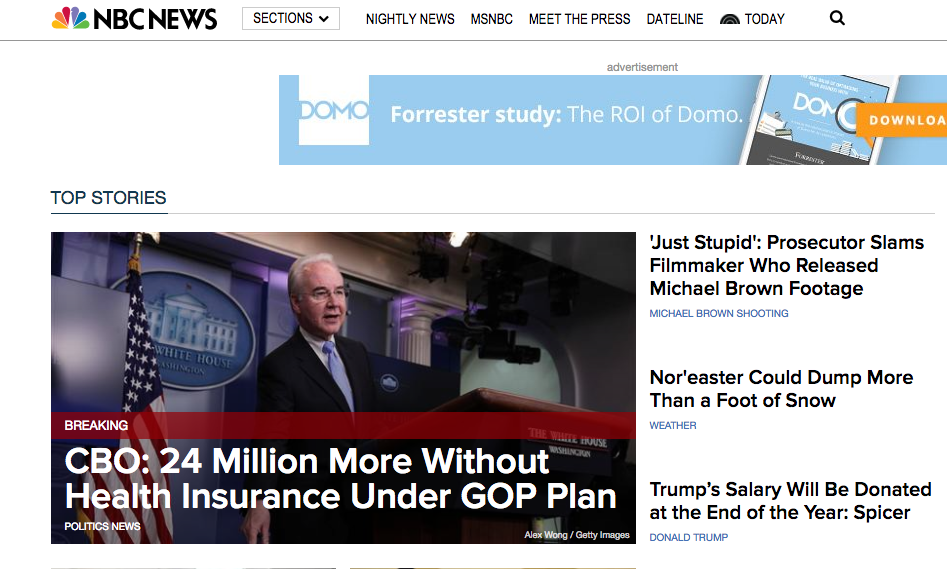
ABC News
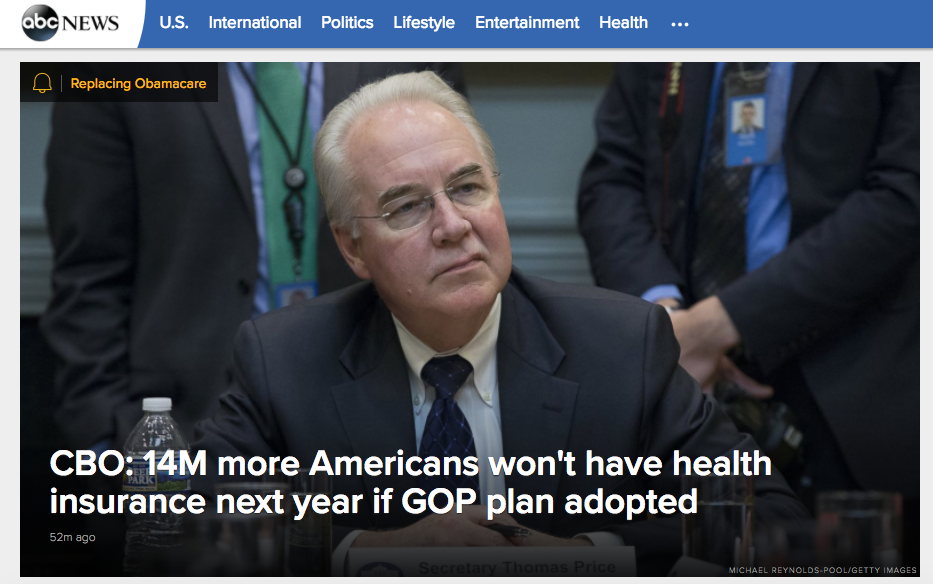
NPR
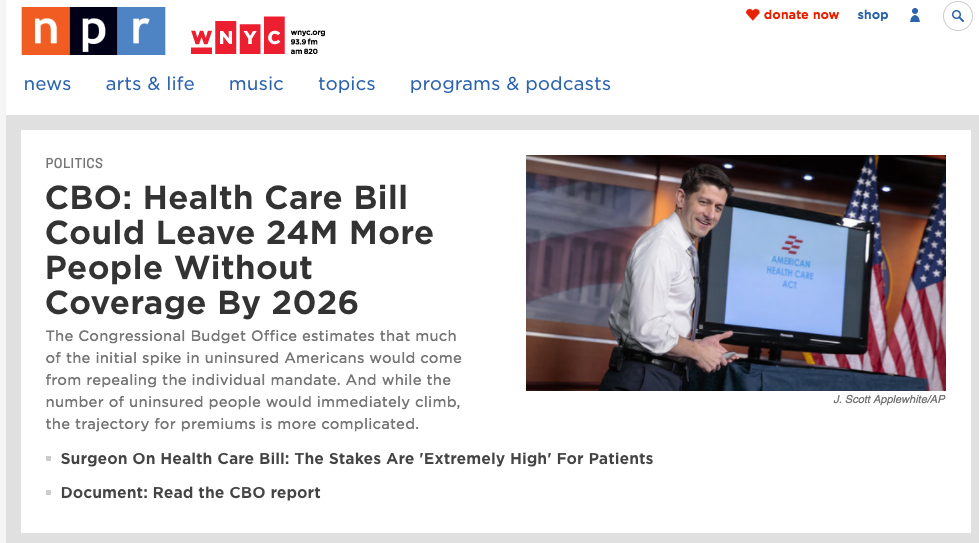
Huffington Post
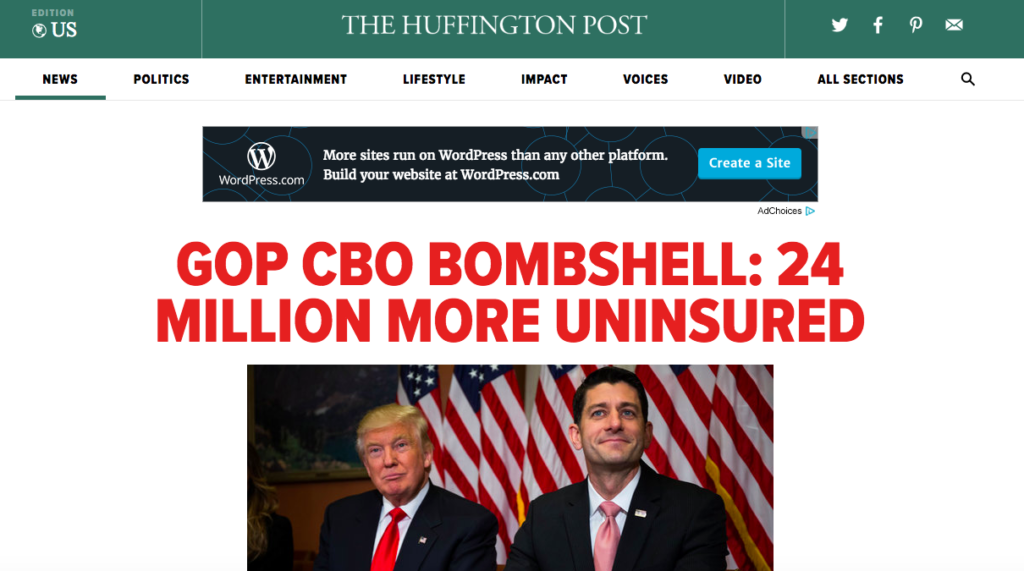
Breitbart
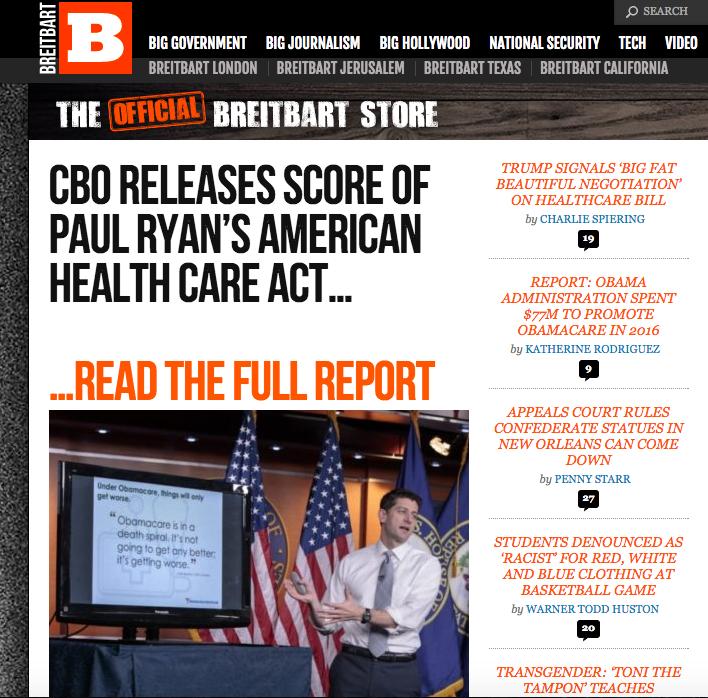
MSNBC
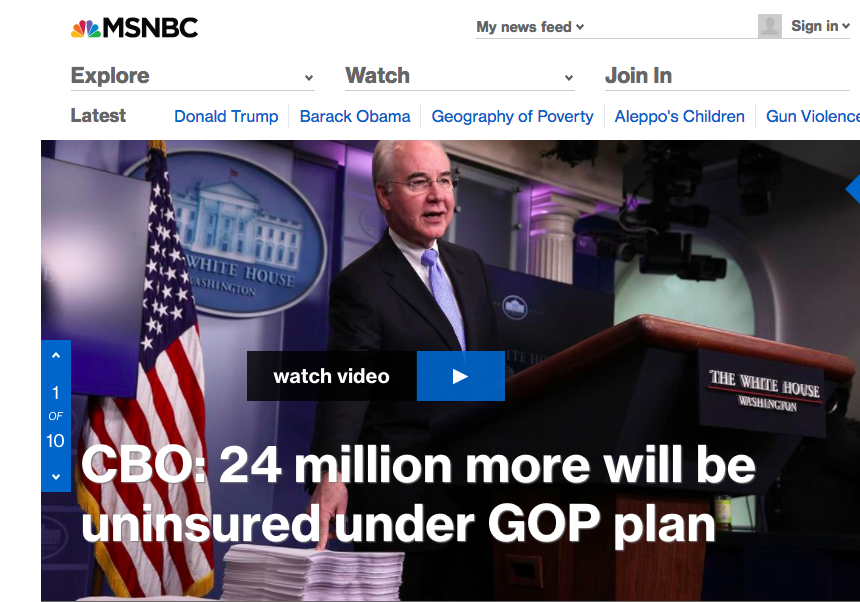
CNN
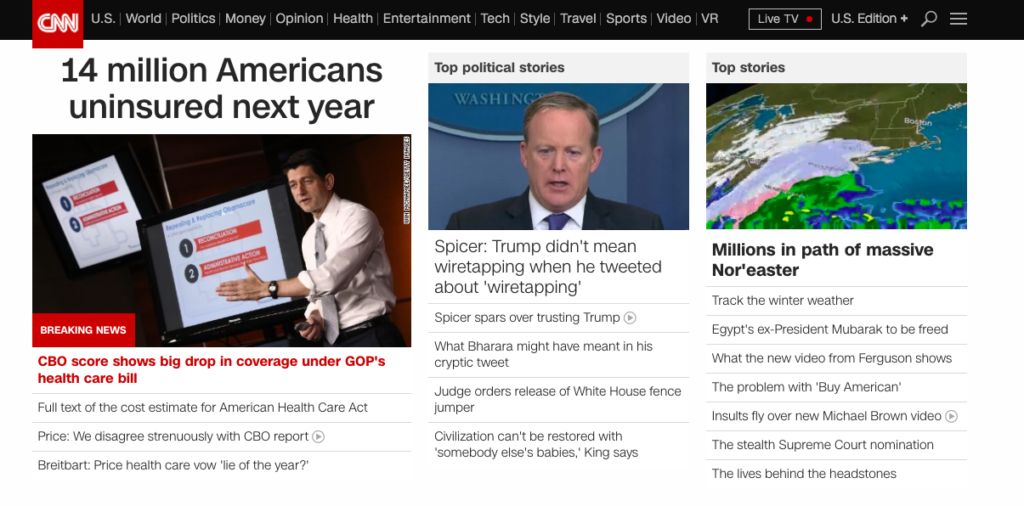
This is a basic story relaying the results of a report, yet each news outlet reported the numbers differently (and Fox News and Breitbart didn’t report the numbers at all). The headlines from The New York Times, The Wall Street Journal, NBC News, NPR, Huffington Post, and MSNBC said that 24 million would be uninsured under the new GOP plan, while CBS News, ABC News, and CNN reported that 14 million would be without insurance.
That’s a pretty big difference in numbers, so which is correct?
Turns out, they both are: 14 million refers to the number of people who would be without coverage next year while 24 million is the number of people who would be uninsured by 2026. Some of the news outlets (like NPR) made this clear while most others did not. Most likely, the majority of the news outlets chose the bigger number because it’s more attention-grabbing and would garner more clicks.
If you were only quickly scanning the headlines (like so many of us do), you would not walk away knowing the truth. And you might even go on to spread falsehoods to others, which is scary since, according to Pew, 63 percent of Americans say family and friends are an important way they get the news.
Of course, most of us don’t have time to cross-check every single article we read — we’re lucky if we have time to read the news at all. But as citizens of this country, I think it’s our duty to be responsible consumers of the news media.
What does that look like? First, don’t take everything you read at face value. Ask questions and talk to others who don’t hold the same views as you. Second, learn how to tell if your news source is credible (this article from the American Press Institute is extremely helpful). And third, don’t just read one news source. If you’re a dedicated MSNBC viewer or reader, check out Fox News from time to time (and vice versa) so you can see how a topic is covered from various angles.
I recognize that I’m a Democrat living in the one of the most liberal cities in the world. But that doesn’t mean that I don’t care about people living in the suburbs or rural areas. In fact, I grew up in those areas — first, in upstate New York until I was 12 and after that, the rural suburbs of Atlanta. The only way for us to survive — and thrive — as a nation is if we get rid of our “us versus them” mentality and try to understand each other. Only then can we create a country that works for everyone. So if you need me, I’ll be over here reading Fox News — and I hope you’ll do the same.
P.S. Wondering how to separate fact from fiction during this confusing political era? Check back here in the coming weeks for more articles demystifying the news.




